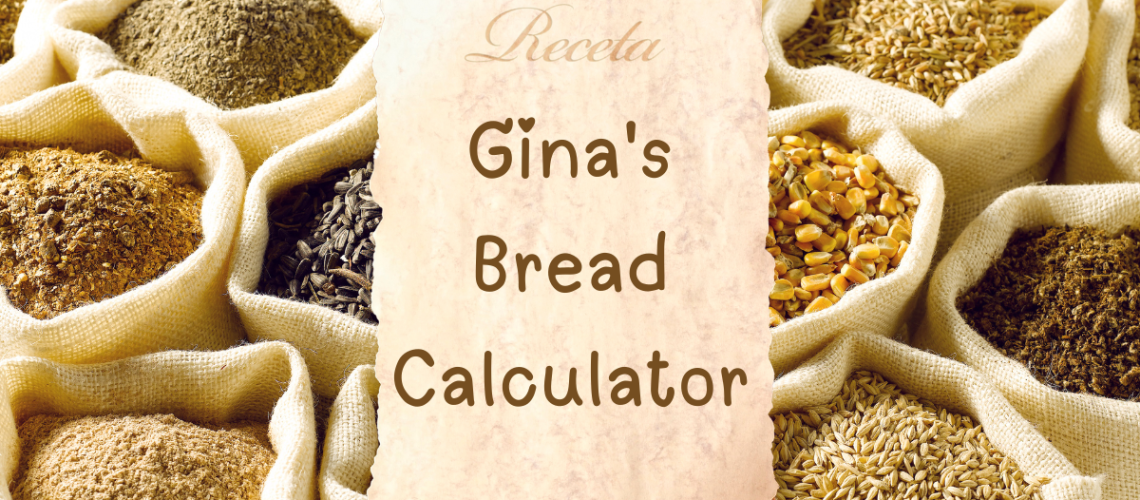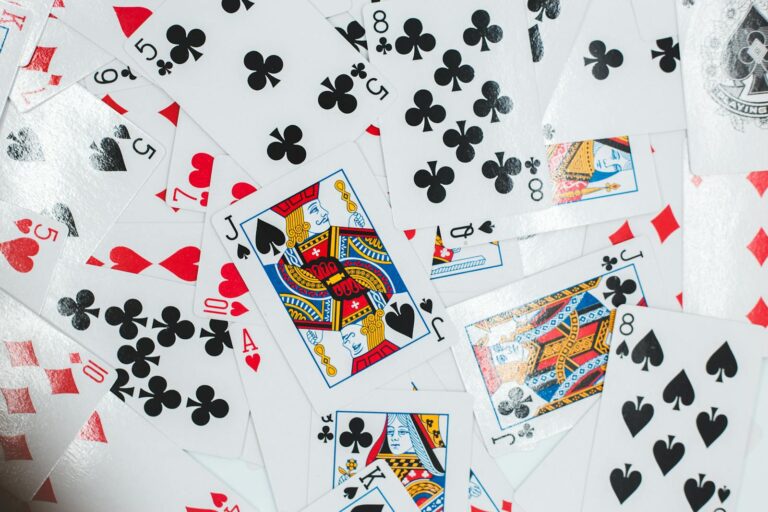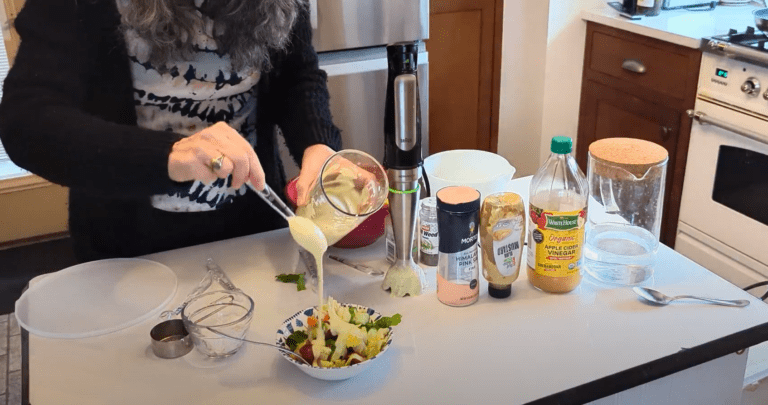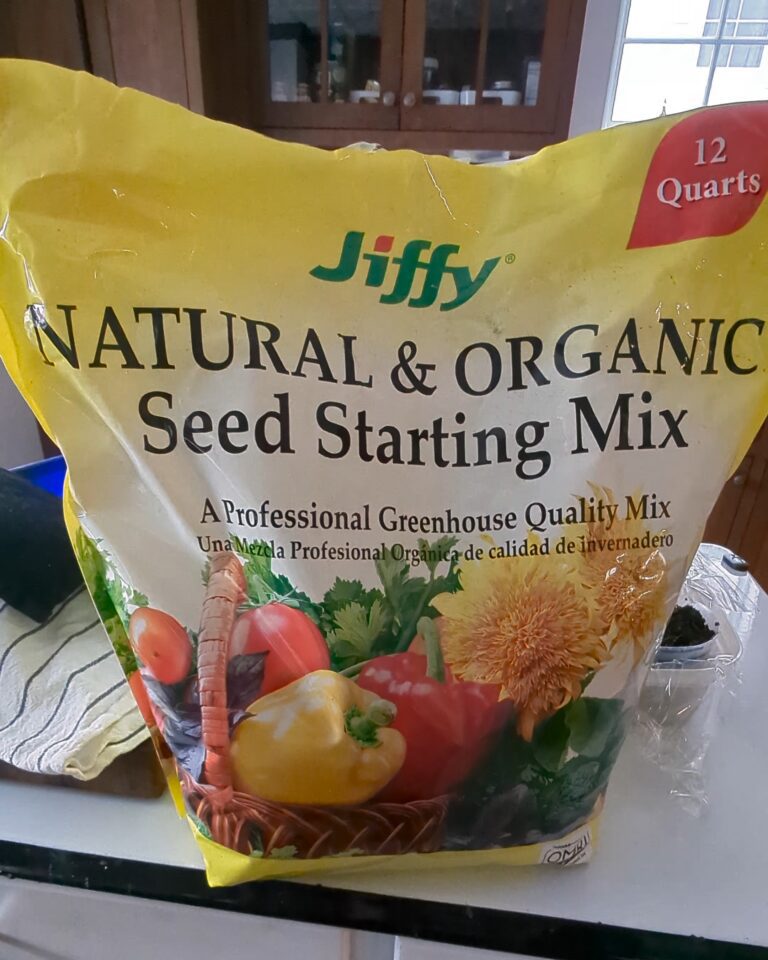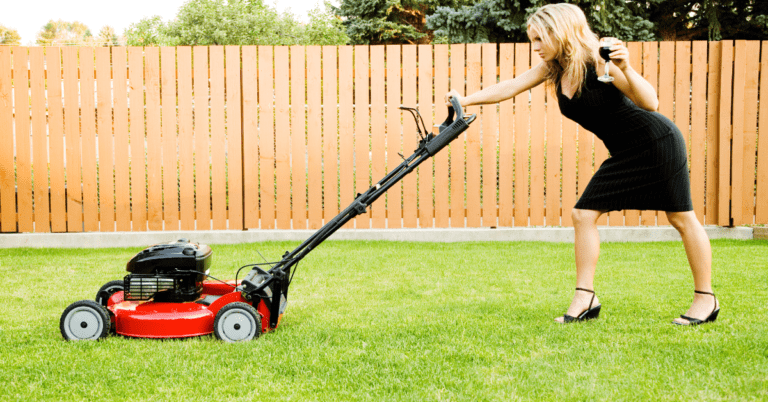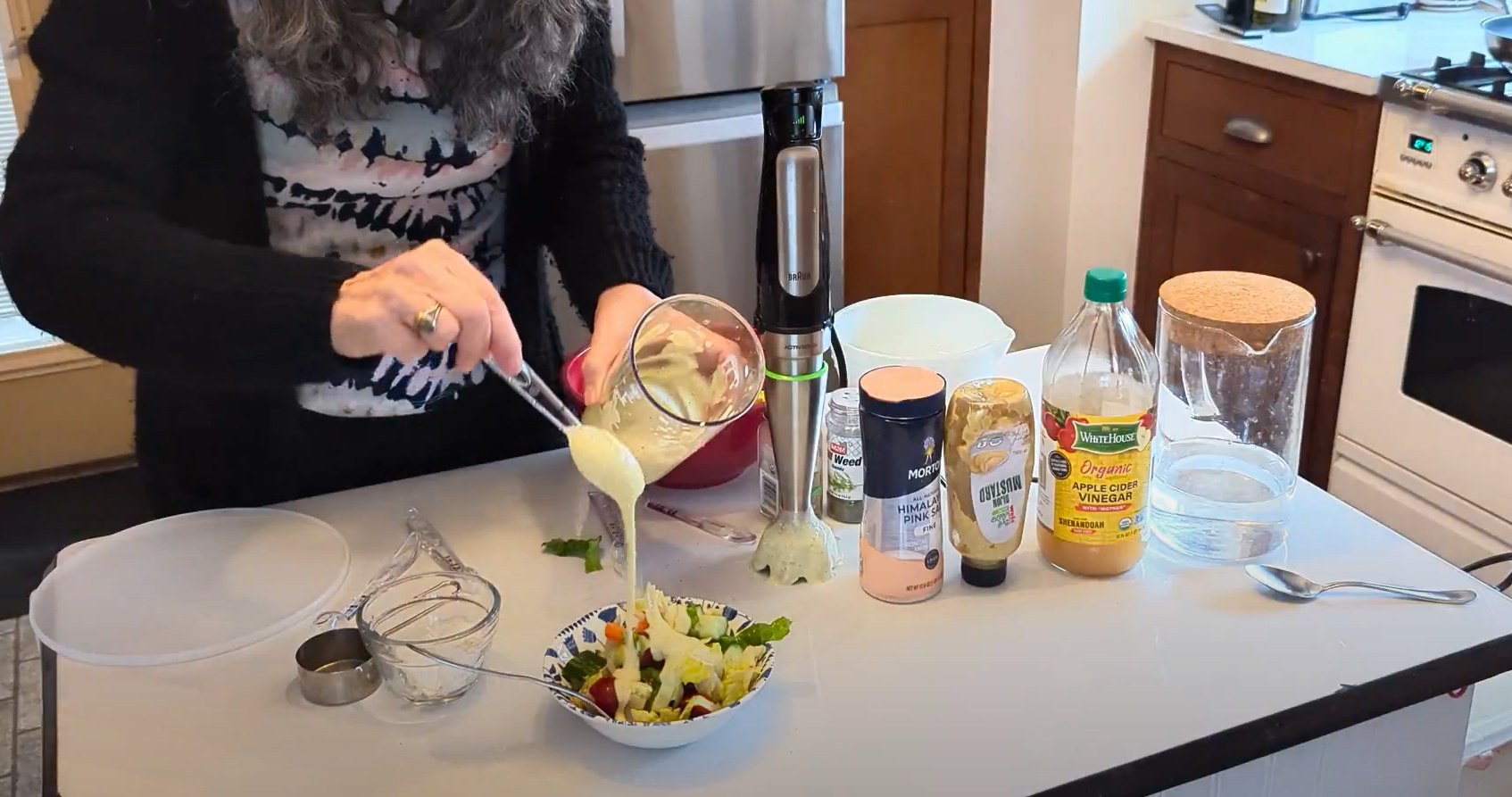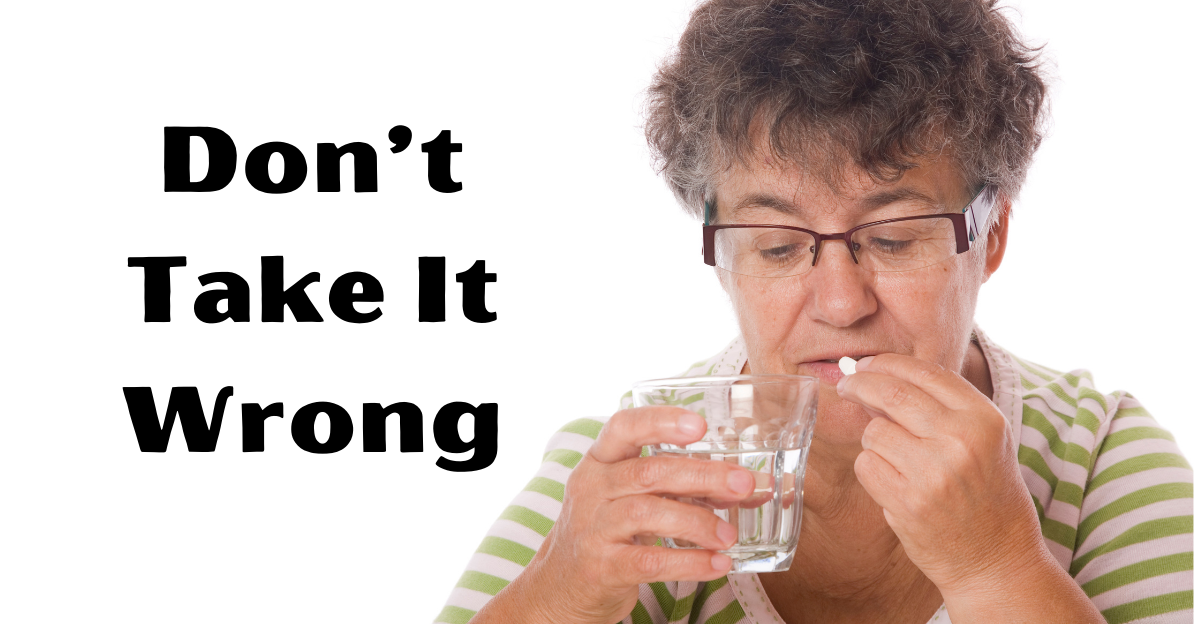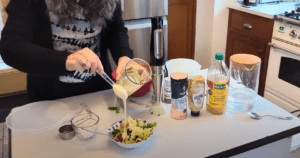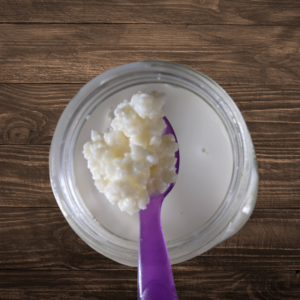As an Amazon Associate, I may earn from qualifying purchases at no cost to you. At www.retiregal.com, we’re committed to providing valuable solutions and therefore include carefully chosen affiliate products and services. Your support helps us continue offering quality content. We only recommend solutions we truly believe in.
Ever spend hours scouring the internet for a bread recipe that uses the exact flours you have on hand, only to come up empty-handed?
We’ve all been there. Experimenting with different flours, like Hard Red, or especially ancient grains like Einkorn or Spelt, can be exciting! BUT, figuring out the perfect ratios and hydration levels can feel like solving a complex equation. This frustration is a thing of the past!
This article introduces Gina’s Bread Calculator, a game-changer for home bakers.
Forget sifting through endless recipe variations. This handy tool allows you to create your own custom bread recipe using any combination of flours you desire. Paired with our flour comparison chart, explaining key differences between each type of flour, you’ll have all the information you need to craft the perfect loaf.
No more endless calculations or substitutions – Gina’s Bread Calculator does the hard work for you, giving you a single, easy-to-follow recipe that takes into account the unique properties of your chosen flours.
Let’s embark on a delicious journey of baking with confidence!
Why I Think Bread is Good For Us
In my retirement years I’ve had the wonderful opportunity to practice my cooking and baking skills. It’s amazing to me that, even after all the years I’ve been preparing meals and baking desserts and breads, there was still SO much room for improvement!
In recent years I’ve become very conscious of what foods are bad for me, better for me, good for me and awesome for me. I’ve been down the path of cutting out gluten and dairy and finding that it did help me with certain health issues I was having. See this article and this one also!)
I went about 2 years avoiding gluten and dairy. During that time I did fine, but missed bread terribly. I decided to look into whether there were alternatives to traditional store-bought bread that were not hard as brick gluten-free disasters that can and never will satisfy as true wheat breads can.
One of the reasons I started my search was that I kept thinking about the bible and how bread was such a staple in the diets of God’s children. I felt that if bread was talked about so much in the bible that surely God meant for us to eat it. This helped my search for bread options start off on the right foot.
I was led into a discovery of a whole new world of ancient wheats, known for their superior nutritional value compared to their modern counterparts. These unprocessed grains are packed with nutrients. I quickly learned that in order to have bread containing these wonderful grains, I would need to make it myself.
Enter bread baking!
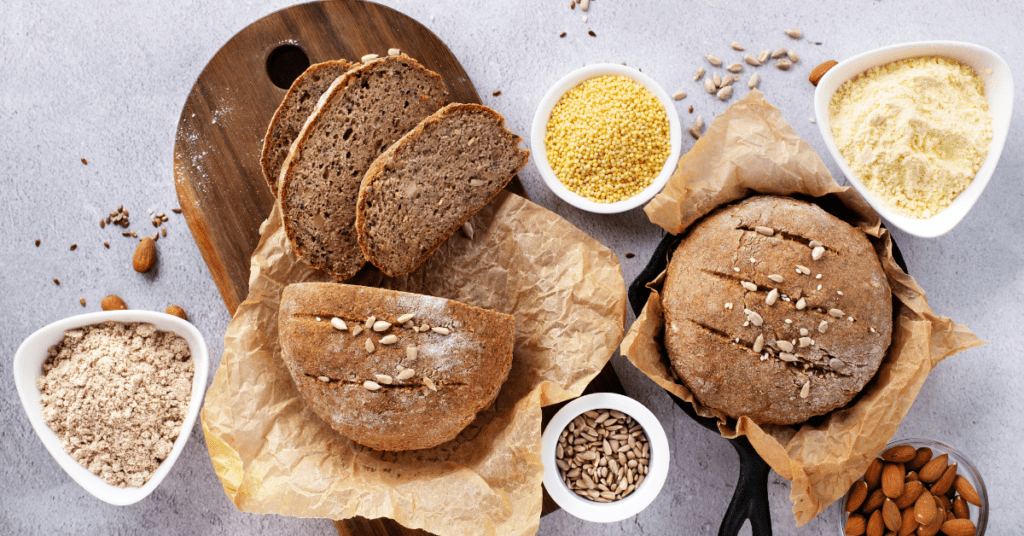
The Learning Curve with Ancient Grains
What I discovered is a whole new galaxy of grains and wheats that are immensely better for us than what is put into a loaf of supermarket bread.
The grains I discovered are called “ancient grains” because they have not been tinkered with – they are as they were in ancient days. You see, our modern wheats started out, once upon a time, just fine and dandy.
However, over the last century, our grains have not been adulterated in order to help amp up the size of the grain, growth success, etc. This is presumably to ensure a robust food supply for our growing world.
Wheats that are classified as ancient grains are Einkorn, Emmer, Kamut (aka Khorasan) and Spelt.
Oh My
I began baking with these grains and can I just tell you that the learning curve was steep. The world of bread recipes is pretty erratic when it comes to my desire to experiment with the nutritous breads that these grains can produce.
The ancient grains do not act in the same way that modern wheat flours do. Recipes need to take into account that the gluten structure in some of the grains is a bit different and even absent in some of the grains I wish to use. I’m not about to throw some extra gluten into the recipes as some suggest.
My goal became to combine the ancient wheats and grains with a modern wheat variety that won’t cause inflammation.
I learned that when I used 50% of an ancient grain flour along with 50% bread flour from the grocery store, the bread always came out amazing. I made bread like this for all of about 2 weeks and suddenly, both my husband and I started waking up with swollen knuckles, followed by other aches and pains.
We had to eliminate the grocery store bread flour and get back to the drawing board.
My question became, “Is there a modern wheat variety that won’t cripple me as supermarket bread does?”
What I Discovered About Modern Wheat Grains May Surprise You
Through my experiments and research, I eventually learned something surprising about modern wheat grains: when used in moderation and when freshly milled at home, they can actually complement ancient grains to create delicious, nutritious and healthy bread.
The key is balance. Modern wheat, despite its controversial reputation, can provide a good gluten structure that ancient grains sometimes lack.
I must be responsible here and mention that you should please be mindful that everyone’s body reacts differently to these grains. Some might experience sensitivities, while others may not. What I experienced may be completely different from what your experience might be.
My experience:
By combining a modest amount of freshly milled modern wheat, such as hard red wheat or hard white wheat, with ancient grains like Einkorn, Emmer, Kamut, and Spelt, I was able to craft bread that not only tasted incredible but also made me feel just fine! No ill effects!
I do think the secret, for me, was including the ancient grains.
My feeling is that eating this bread in moderation can give us a new lease on our bread-loving life, allowing us to enjoy the staple that has nourished humanity for millennia, while still being mindful of our health and well-being.
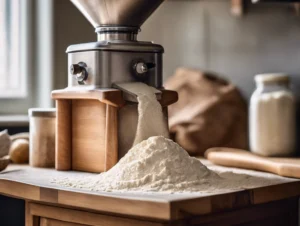
Not Interested In Milling Your Own Flour? No Problem.
Keep in mind here that I’m a bit of a health fanatic. See My Soapbox at the bottom of this page to learn more about why I am cautious about the flour I purchase. I am at an age where my body doesn’t tolerate foods like it did when I was a youngster. I am a proponent of freshly milled grains because I like to know exactly what’s in my flour.
I like to purchase my grains from a farm that is truly organic and when I mill my own flour I know, for a fact, that nothing was added or taken away from the grains God provided us with.
If you’re not concerned about these things, then I would simply encourage you to at least look for flours that are marked as non-GMO and organic. Also, whole grains are SO much more beneficial than flour without the bran and the germ, so perhaps at least try baking breads with some percentage of whole grain.
Testimonial: I want to sneak in a little bit of encouragement to let you now that children do NOT care what kind of healthy grains you put into freshly baked bread. I have several kids and grandkids and never have they ever turned their nose up at a wholesome whole grain ancient wheat loaf of bread!
The calculator below will help you experiment to create your own healthy recipe for fresh bread that suits YOU and your family.
Why I Created Gina's Bread Calculator
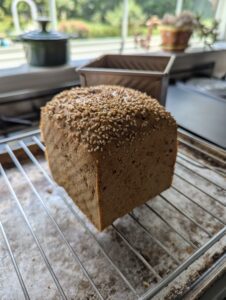
I have always found baking bread to be amazing…when it comes out good. I’ve had my fair share of bricks! Those bricks have made me very leery of not using a recipe, or at least a baker’s percentage guideline. (If you do not know what a baker’s percentage is, see the next section below!).
In the past, baking with different flours felt like a constant guessing game. My pantry overflowed with beautiful bags of Einkorn, Spelt, and other flours and grains, but finding recipes that used what I felt like making that day or what I had on hand was an annoying struggle.
I’d literally spend hours online, looking for the recipe that matched the flours I had and the timeframe I needed to bake in. Most of the time I would come up empty-handed. Attempting to “wing it” often resulted in dense, disappointing loaves – a heartbreaking waste of money, perfectly good flour, and precious time!
There are countless cookbooks and recipe websites, yet what I truly needed was a straightforward method. I envisioned a tool that could take any combination of flours I had on hand and generate a personalized recipe with the correct ratios and hydration levels.
My frustration became the fuel for Gina’s Bread Calculator! Now, with a few clicks, you can skip the endless recipe hunting and confidently create delicious bread masterpieces, using the flours you already have.
In addition to Gina’s Bread Calculator, you’ll find that down below I’ve included a standard recipe for same-day bread, perfect for those who need the satisfaction of fresh-baked goodness in a single morning or afternoon.
I’m not stopping there, though! I’m currently experimenting with creating instructions for a no-knead, make-ahead recipe that works with any combination of flours. Imagine the possibilities – delicious, homemade bread whenever you crave it, without the time commitment!
Please subscribe to be notified of new articles!
What is a Baker's Percentage? Good question!
The baker’s percentage, to me, is the absolute KEY to making a certain-to-be-good bread!
Imagine you wish to make a loaf of bread. Think of baker’s percentages as a code for bread, where each ingredient is expressed as a proportion of the flour weight.
Here’s the basic idea:
- The flour is always 100%: It’s like the foundation of your dough castle.
- Other ingredients (water, yeast, and salt) are a percentage of the flour weight.
So, if a recipe says 70% water, that means you use 70 grams of water for every 100 grams of flour. It’s like a ratio, but way cooler because it uses percentages!
Here’s another simplified, but specific, example:
Imagine a recipe calls for 100 grams of flour (always 100% in baker’s percentages). You then use: 75% water (75 grams), 1.5% yeast (1.5 grams), and 2% salt (2 grams) for a basic loaf. These percentages can change depending on the flour, but it gives you the baking code idea!
Now, here’s the twist: different flours are like different building materials. Whole wheat flour, with all its bran and germ (the nutritious parts), acts a little differently than white flour, which is mostly starch.
Because of this, some flours need more or less water to create the perfect dough. For example, a recipe with whole wheat flour might need 80% water instead of 70% because the bran absorbs more water.
Baker’s percentages help you adjust for these differences. This is why Gina’s Bread Calculator is so cool! It takes the type of flour you choose into account and recommends a good starting point for the water percentage, making it easier to get the perfect dough every time.
The calculator then converts everything into a recipe format that is simple and straightforward!
Ancient and Modern Grains Comparison Chart
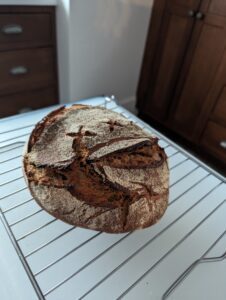 Take a peek at the flour and grain comparison chart below. Hopefully it will help familiarize you with the differences between ancient and modern grains when it comes to using them in your baking.
Take a peek at the flour and grain comparison chart below. Hopefully it will help familiarize you with the differences between ancient and modern grains when it comes to using them in your baking.
Understanding bakers’ percentages and nutritional profiles empowers you to make informed decisions about which flour types best suit your baking needs. Whether you’re seeking robust flavor, unique textures, or nutritional benefits, this comparison chart aims to clarify when to use each type, highlighting the distinct advantages of ancient grains like Einkorn and Kamut alongside their modern counterparts.
| Flour Type | Protein (g) | Carbs (g) | Fiber (g) | Vitamins & Minerals (%DV) | Baker’s Percentages | Recipe Preference | Additional Characteristics |
|---|---|---|---|---|---|---|---|
| Einkorn – All Purpose Flour | 16.0 | 87.6 | 4.8 | Iron 20%, Thiamine 30%, Niacin 25% | Water 67.5%, Yeast 1.5%, Salt 1.9% | Bread, Pastries | Ancient grain, nutty flavor, low gluten |
| Einkorn – Whole Wheat Flour | 20.0 | 84.0 | 9.6 | Iron 20%, Thiamine 30%, Niacin 25% | Water 72.5%, Yeast 1.5%, Salt 1.9% | Bread, Porridge | Ancient grain, rich in antioxidants |
| Hard Red Wheat – Freshly Milled | 16.2 | 85.2 | 14.4 | Iron 20%, Magnesium 16%, Zinc 12% | Water 62.5%, Yeast 1.5%, Salt 1.9% | Bread, Rolls | High gluten content, robust flavor |
| Hard White Wheat – Freshly Milled | 15.6 | 85.2 | 12.8 | Iron 19%, Magnesium 15%, Zinc 11% | Water 62.5%, Yeast 1.5%, Salt 1.9% | Bread, Rolls | Mild flavor, high gluten content |
| Kamut – Freshly Milled | 17.6 | 84.0 | 13.2 | Selenium 36%, Zinc 19%, Magnesium 37% | Water 67.5%, Yeast 1.5%, Salt 1.9% | Bread, Pasta | Ancient grain, sweet and buttery flavor |
| King Arthur Organic White Bread Flour | 15.2 | 91.2 | 3.6 | Iron 8%, Thiamine 10%, Niacin 10% | Water 62.5%, Yeast 1.5%, Salt 1.9% | Bread, Rolls | Organic, non-GMO, reliable consistency |
| King Arthur Organic Whole Wheat Flour | 16.6 | 76.8 | 14.4 | Iron 15%, Magnesium 15%, Zinc 10% | Water 67.5%, Yeast 1.5%, Salt 1.9% | Bread, Rolls | Organic, non-GMO, high nutrition |
| Rye – Whole Grain Flour | 14.6 | 81.6 | 18.0 | Iron 14%, Magnesium 24%, B vitamins 25% | Water 67.5%, Yeast 1.5%, Salt 1.9% | Bread, Sourdough | Distinctive flavor, lower gluten content |
| Soft Red Wheat – Freshly Milled | 12.0 | 90.0 | 3.2 | Iron 7%, Magnesium 7%, B vitamins 10% | Water 57.5%, Yeast 1.5%, Salt 1.9% | Pastries, Cakes | Lower gluten content, softer texture |
| Soft White Wheat – Freshly Milled | 11.3 | 90.0 | 3.2 | Iron 6%, Magnesium 6%, B vitamins 8% | Water 57.5%, Yeast 1.5%, Salt 1.9% | Pastries, Cookies | Low gluten content, light texture |
| Spelt Whole Grain Flour | 17.5 | 84.0 | 12.8 | Iron 17%, Magnesium 24%, Zinc 16% | Water 67.5%, Yeast 1.5%, Salt 1.9% | Bread, Pasta | Ancient grain, nutty flavor, more digestible |
Notes:
- Nutritional values are approximate and can vary slightly depending on the source and specific variety.
- Protein is typically higher in hard wheats, making them suitable for bread due to their gluten content.
- Carbohydrates are a primary component of all whole grains, providing energy.
- Fiber content varies, with whole grains generally being a good source.
- Vitamins and minerals like iron, magnesium, zinc, and B vitamins are common across different types of wheat, contributing to their nutritional value. The %DV (Daily Value) is based on a 2,000 calorie diet.
- Baker’s percentages are approximate guidelines and you can adjust them as desired. This is meant to help guide you in using recommended percentages. Note that Hydration is a desired outcome: Bakers may adjust hydration based on the desired texture and crumb structure of their bread. A higher hydration can create a more open crumb, while lower hydration leads to denser loaves.
- Recipe preferences highlight the most common uses for each type of wheat based on their characteristics, such as gluten content and texture.
Did I miss a flour you are curious about? Leave a comment below!
Gina's Bread Calculator
What Gina’s Bread Calculator does:
You enter the flour types you wish to use and the calculator will do the math to create a recipe that calculates and totals the total water, yeast and salt needed, based upon the recommended baker’s percentage for each flour chosen. The baker’s percentages being used are shown in the flour comparison chart above.
How to use Gina’s Bread Calculator:
- Enter the grams of total flour you wish to use. A typical loaf is 500 grams.
- Enter up to four different flours that you wish to use in your bread.
- Enter the percentage of each of those flours.
- Example: To make a 50% Einkorn and 50% Spelt bread, simply enter the number 50 after each flour entered. The percentages must add up to 100.
- Click the Calculate Recipe button.
Gina's Bread Calculator
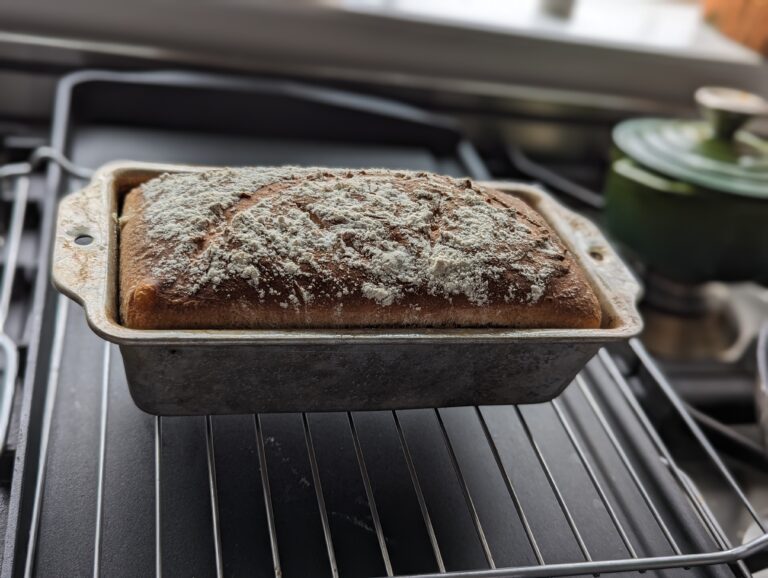
Gina's Bread Mixing and Baking Instructions
Following is my personal method of mixing and baking bread. If you are already familiar with bread baking and have a different method that you prefer, definitely go with that! We often overcomplicate things by thinking we have to stick to a recipe, when in fact, bread recipes are incredibly forgiving! However, if you’re a newbie, it’s best to stick to the suggestions below!
Ingredients:
- Flour – use the amount and type will as entered into Gina’s Bread Calculator
- Water (use the baker’s percentage provided by the calculator) – I prefer to use room temperature water. It’s never too hot or too cold!
- Salt (use the baker’s percentage provided by the calculator)
- Yeast (use the baker’s percentage provided by the calculator) – Active Dry Yeast: Recommended to multiply the yeast percentage by 1.25 to find the equivalent amount of Active Dry Yeast. It is also recommended to always dissolve this type of yeast in the water for 5 minutes before using.
Equipment:
- Mixing bowl
- Strong mixing spoon
- Kitchen scale (recommended for accuracy, but not essential)
- Bench scraper (optional, but helpful)
- Clean work surface
- Baking sheet
- Parchment paper (optional)
- Sharp knife (optional, for scoring)
Instructions:
Combine the room temperature water and yeast: In a large bowl, combine the water and yeast according to the baker’s percentages from the calculator.
Add flour(s) and salt: Add the flour and then sprinkle the salt evenly over the flour. Mix either with a mixer (dough hook), your hand or with a strong spoon until a shaggy dough forms. When squeezed, it should mostly stick together.
PRO TIP: Assess the dough now: This is the time when you should decide whether you need to adjust the hydration level of your dough. If it’s rainy/humid, the dough may be too sticky – add a little flour to help the dough become workable. If it’s a dry day or you run an A/C, the dough may be too dry – add a little water to help the dough come together.
Knead the dough:
Ancient grains and no/low gluten flours – mix the dough until it comes together and the flour lumps are mostly gone. Do not over-mix. Kneading is not recommended with flours that are not high in gluten.
Gluten flours – Knead the dough for 5 minutes. Then, let it rest for a couple of minutes. Return to it and continue kneading for up to 10 more minutes or just until the dough becomes smooth and elastic, and pass the windowpane test (stretch a small piece of dough – it should be translucent without tearing). Kneading too much is not really a problem with high gluten flours.
- Mixed flours – If you’re using a no gluten flour with a high gluten flour, knead for about 5 minutes until the dough is smooth. Do not overdo it.
Bulk fermentation: Place the dough in a clean bowl. If it’s very sticky you can either grease the bowl or dust it with flour. Cover it and let it rise in a warm place (ideally around 70-80°F) for 1-2 hours, or until doubled in size. The time will depend on the temperature of the room and the strength of your yeast, so pay attention to the growth!
Prepare the baking vessel: You can either bake in a loaf pan or in a dutch oven, or even on a baking sheet. It all works! I like to use natural parchment paper to prevent sticking, but you may also grease your pan. If you are using a dutch oven, place in the oven now. Don’t turn it on yet.
Shaping: Once the dough is doubled in size, gently turn out the dough on a lightly floured surface. Gently press it into a round or batard (oval) shape. Pull and roll the dough into the shape you want to bake it in.
Proofing: Place the shaped dough seam-side down into your greased loaf pan or onto your prepared baking sheet or onto a piece of parchment (for dutch oven method). Cover it and let it rise for another 1-2 hours* (see next step now), or until a gentle finger push slowly fills back in most of the way.
Preheat the oven: At least 30 minutes before the end of proofing, preheat your oven to the temperature specified by the recipe calculator (usually around 450°F). If using an oven fan, lower temperature to 425°F.
Scoring (optional): Use a sharp knife to score the top of the dough just before baking (optional, helps with bread expansion). You can also add sesame seeds now if you like.
Bake: If using one of the pans, uncover the dough and transfer to the preheated oven. If using the dutch oven, carefully place the dough (with the parchment paper) into the HOT dutch oven and close the lid. Remove the lid after 20 minutes. A typical sized loaf takes 30-40 minutes. The best method to check for doneness is to use a probe thermometer – when it reaches 195, the bread can be removed.
Cool: Transfer the hot baked bread (remove from pan) to a wire rack to cool completely before slicing and serving. I absolutely recommend waiting at least 1 hour before slicing!
My Soapbox: Why I Am So Passionate About Using Organic and Non-GMO Flours
 Modern flours that are derived from genetically modified organisms (GMOs) and treated with pesticides like glyphosate pose significant health and environmental risks. Glyphosate, a common herbicide, has been linked to various health issues including potential carcinogenic effects as classified by the World Health Organization (MDPI). The use of glyphosate is widespread in conventional wheat farming, which can lead to residue in food products such as bread and cereals (MDPI). Additionally, modern wheat varieties have been bred for higher yield and pest resistance, often at the cost of nutritional value. These changes have resulted in wheat that is less nutritious compared to the ancient grains that God originally provided us with (Dr. William Davis).
Modern flours that are derived from genetically modified organisms (GMOs) and treated with pesticides like glyphosate pose significant health and environmental risks. Glyphosate, a common herbicide, has been linked to various health issues including potential carcinogenic effects as classified by the World Health Organization (MDPI). The use of glyphosate is widespread in conventional wheat farming, which can lead to residue in food products such as bread and cereals (MDPI). Additionally, modern wheat varieties have been bred for higher yield and pest resistance, often at the cost of nutritional value. These changes have resulted in wheat that is less nutritious compared to the ancient grains that God originally provided us with (Dr. William Davis).
In contrast, organic flours, which come from non-GMO and pesticide-free farms, are a healthier alternative. They avoid the detrimental effects of glyphosate and maintain the integrity of the whole grain, providing more nutrients and fiber. Choosing organic flour ensures a more wholesome, natural product that aligns with a commitment to health and environmental stewardship.
For more information, you can explore detailed studies and articles on the health effects of glyphosate and the benefits of organic farming on the MDPI website and Dr. William Davis’s research (Dr. William Davis) (MDPI).

